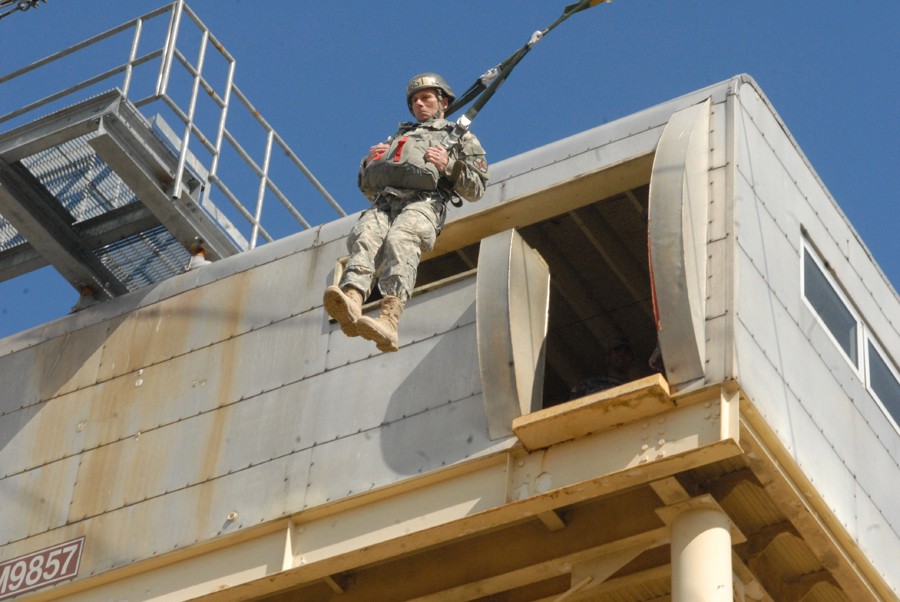The 453 students in C Company, 1st Battalion (Airborne), 507th Parachute Infantry Regiment, exited the 34-foot training tower twice as many times as the normal requirement March 3.
The change is one of several resulting from the new T-11 parachute system integration at the U.S. Army Airborne School. The new parachute replaces the T-10 system that has been in use since the 1950s and will be phased out over the next 15 years, said 1st Sgt. Christopher Goodrow, C Co., 1st Bn., 507th PIR.
Goodrow said students are getting trained on both systems. They will jump six times with the T-10 and T-11 parachutes and receive eight passing evaluations instead of four.
The T-11 design should decrease injuries and has an increased weight tolerance for heavier combat loads and a decreased descent pace for softer landings, Goodrow said.
The square shape of the T-11 is easily identified compared to the T-10's circular shape, and it features a slider component that separates lines and reduces the possibility of inversion.
"It eliminates many of the malfunction possibilities we had with the T-10," Goodrow said. "This has been needed for a long time. For the Airborne community, I think this is a leap into the 21st century."
Few units have been conducting jumps with the T-11, but many Airborne units will see the new parachutes fielded by the end of the year, making this the right time to phase it into the school, said Capt. Dean Gibson, C Company commander.
"It's important to train students on the T-11 parachute system before they arrive at their units," he said. "So once they get there, their focus is on becoming combat-ready."
During week one, also known as ground week, Soldiers learn to put on a parachute, exit a mock door and perform parachute landing fall and recovery methods.
Adaptations have been required for instructors, known as Black Hats.
"We've been training for about six months," said Staff Sgt. James Patterson, a Black Hat for two years. "We had to relearn our classes and relearn our demonstrations before we could pitch the class to our students."
Maj. Douglas Hoover, the Maneuver Center of Excellence Family Life c haplain, who is currently in the school, said he admired the dedication of the staff.
"I feel more for the cadre because they have to get the same amount of material in on both systems," he said, adding he was excited about being in the first class of trainees.
Sgt. Michael Holbein, who is in the Air Defense Artillery branch, said he was a little nervous about exiting a plane, but its something he's wanted to do for a long time. "(The training) is repetitious, but it's beneficial," Holbein said. "It becomes muscle memory so that when I do jump, I'll know how to do the right thing."
Staff Sgt. Benjamin Thurman, who has been a Black Hat for 18 months and has completed 15 cycles, said the 34-foot tower used during ground week exposes students to the shock of free falling and the catch of the parachute and gives them a point of reference.
"This is a good time and a good place to conquer your height fears," Thurman said. "If you can jump from 34 feet, you can definitely jump from 1,250 feet."
During week two or tower week, the students will descend from the 250-foot tower.


Social Sharing